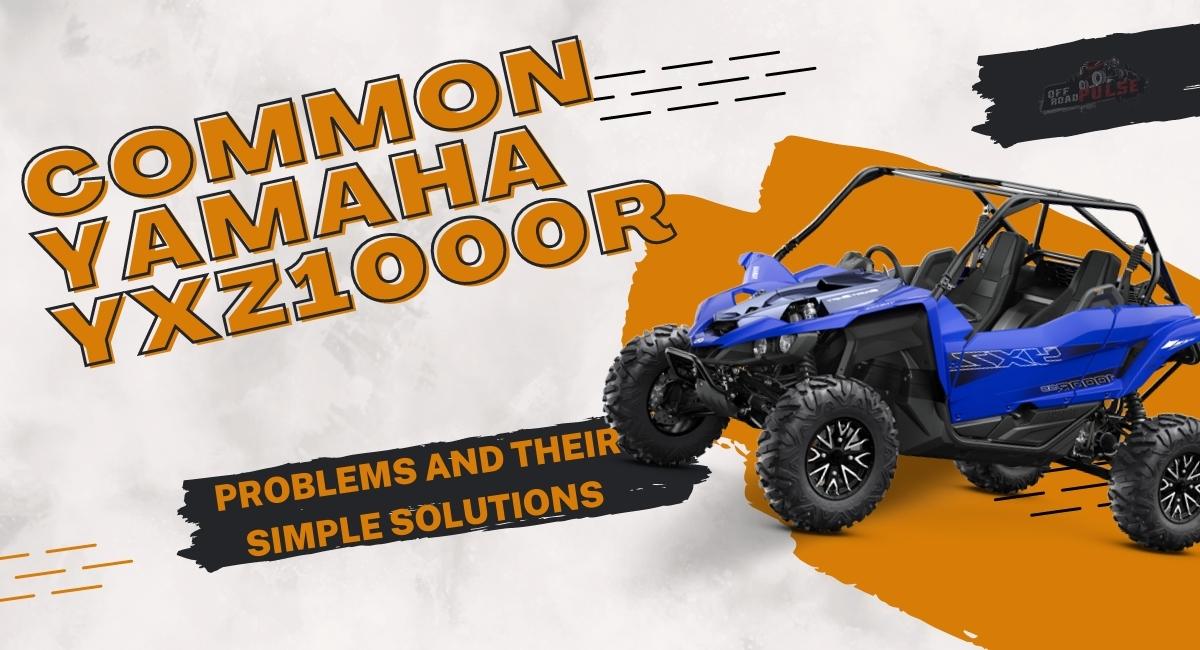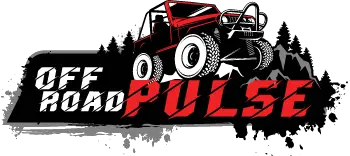The Yamaha YXZ1000R is a side-by-side sport popular for its powerful engine, unmatched agility, and handling. But, just like any utility vehicle, the machine is bound to experience some problems. Whether you own or planning to get one, it is crucial to understand and address the problems that might arise while using this machine.
This is not just for the enjoyable and daring riding experience you want but also for your safety and machine. So, what are some of these problems, and how do you troubleshoot them?
I will discuss all that and more in this post.
6 Yamaha YXZ1000R Problems
Yamaha YXZ1000R issues are generally classified into three major categories: general problems, transmission problems, and clutch-related problems. Everyone who owns this model of UTV should focus primarily on these issues to maintain their vehicle’s optimal performance and extend its lifespan.
The general problems encompass a long list of issues that can affect various components of the machine, from minor issues to important ones. Some of them include stalling, hard starts, and belt issues. Since they are issues common to other utility vehicles, we will not discuss them in this post. Our focus will be on transmission and clutch-related issues.
So, what are these clutch and transmission issues common to Yamaha YXZ1000R machines? Below, we consider six of them and their troubleshooting hacks:

Clutch Problems
If you own a Yamaha YXZ1000R, the clutch problem is one issue you must be prepared to face. It is perhaps the most familiar problem reported by the users of this UTV. One significant sign you will notice when there’s a fault with your clutch is improper transmission engagement and disengagement when you apply your clutch.
For most machines, engagement and disengagement issues are caused by clutch slippage and wear. Although both (clutch slippage and wear) will cause the same problem eventually, they are two entirely different things.
Clutch slippage mainly occurs when the clutch fails to engage fully, causing a loss of power transfer to the wheels. Common causes of slippage include worn clutch plates, insufficient cable tension, or oil contamination. Clutch slippage can lead to reduced acceleration and compromised performance when left unaddressed.
On the other hand, clutch wear is more of a natural wear and tear that occurs as the YXZ1000R accumulates miles on rough terrains. Although clutch wear is not unique to this model of utility terrain vehicle alone, the occurrence frequency seems higher than in other side-by-side machines. Anytime your clutch fails to engage or disengage properly, you can be sure you have one or both (clutch slippage and wear) to deal with.
So, how do you troubleshoot clutch issues when they occur? Find out below.
Solution
The first step is to inspect the clutch components to diagnose what is wrong. The reason is that not every clutch repair is DIY-friendly. While many are straightforward to fix, you will need to get an expert mechanic to resolve others.
If the clutch cable tension is poor, chances are that there’s a fluid leakage somewhere. In most cases, transmission fluid leakages are caused by one or more of the following:
- Broken gasket or seal
- Transmission line leaks
- Output shaft leaks, and
- Torque converter wear
For the four issues above, all you need to restore normal clutch tension is to replace the worn part and add more fluid to compensate for the loss. Suppose there are no traces of leakage anywhere. Another thing you can do is check the transmission fluid level. If the level is low, simply top it off.
If the problem persists, that may be a sign it is time for a clutch replacement. Don’t panic – you don’t have to break the bank to get this done. However, getting an expert to handle the job is best if you don’t trust your DIY skills.
Gear Shifting Difficulties
Another common problem you can encounter if you own a Yamaha YXZ1000R machine is difficulties while shifting gears. A tell-tale sign to watch out for is the average response rate when you shift between gears. If the rate is slower than usual, the problem might be with your clutch.
But what are the causes?
One of the possible causes of gear shifting delay is a malfunctioning transmission position sensor (or transmission speed sensor). Anytime the sensor falls out of alignment, the first sign you will notice is a slow response rate to your gear shifts.
If you’re having gear-shifting difficulties, the transmission fluid is another thing you must check. The gear transmission system may malfunction if the fluid is contaminated or low.
One more possibility is a loosely tied actuator bolt. This bolt plays a significant role in the mechanical operations of every utility machine. If it is not correctly fixed into position, gear shifting may not be smooth.
While shifting issues are general to most YXZ1000R machines, installing inferior aftermarket kits can unnecessarily increase the damage frequency. That is why it is best to always adhere to the manufacturer’s recommendation for every replacement.
Regardless of the cause, it is not advisable to keep riding your machine with a delayed gear-shifting issue. Besides inhibiting your vehicle’s top-notch performance, gear-shifting difficulties can quickly affect other parts of your UTV.
Solution
First, you need to inspect the transmission fluid to be sure the quality and level are intact. As a rule of thumb, a good transmission fluid should either be clear or pinky. If you notice anything otherwise, the fluid is either old or contaminated. In this case, drain the fluid and replenish it with a new one.
Also, be sure the actuator bolt is tight enough. Tighten it properly with a wrench if it is loose. After that, start your UTV and see if the gear shifting will work as it should. If not, you need to get an expert technician to troubleshoot it.
Transmission Oil Leakage
Transmission leakages mainly occur due to broken seals, punctured transmission pan/drain plugs, cracked fluid lines, damaged gaskets, etc. While these issues are not peculiar to Yamaha YXZ1000R alone, they can quickly lead to inadequate lubrication and increased friction within the transmission system. Over time, these, in turn, will affect the overall performance of your vehicle.
Solution:
Inspect the fluid lines, plugs, gaskets, seals, and other transmission components for leakages. You may find this quite overwhelming if you’re not a passionate DIYer – so it may be best to get a transmission mechanic to handle the repair.
Gear Grinding
Another transmission problem common with Yamaha YXZ1000R is gear grinding. Nine out of ten times, gear grinding results from contaminated oil, dirty clutch surface, and improper clutch disengagement while shifting gears.
Besides these, another possible cause of gear grinding is a wrong engine-wheel spin ratio. Normally, the UTV engine and the wheels should spin uniformly. Anytime there is any discrepancy, you can expect to hear strange and excessive noise from your vehicle.
A worn pressure plate or release bearing can cause your gear to make strange noises. As with every other part, the release bearing and pressure plate will wear out as you haul more mileage with your machine.
Although gear grinding can happen anytime, it is more likely to occur while riding on a Yamaha YXZ1000R top speed (160 mph or more). No matter how insignificant the noise may be, it is advisable to fix the problem early. If you have the habit of ignoring signs of faults in your machine, you may end up spending more than necessary to troubleshoot gear grinding in the long run.
Among other things, the jarring and unsettling noise that occurs during gear grinding can lead to premature wear and tear on transmission gears.
Solution
Depending on the cause of the problem at hand, below are a few tricks that can help stop gear grinding:
- Check your transmission fluid to ensure it is not old or contaminated. Top it off or flush and replenish, if necessary.
- Disassemble the clutch components to be sure they are adequately lubricated. Also, inspect the parts for dirt and remove them with a brush.
- Finally, lubricate the clutch components, reassemble them again, and see if that removes the noise.
Stiff Suspension
Yamaha YXZ1000R UTVs also have a reputation for stiff suspension issues, particularly at the rear. If you don’t ride on top speed, you will not likely experience this. If you own this model of utility terrain vehicle, here is how you can resolve the problem.
Solution
An expert is in the best position to solve suspension issues. In most cases, they will either:
- Tune the stock/preload springs, or
- Shock-tune the machine
Overheating
Overheating is another problem many owners of Yamaha YXZ1000R have reported. As expected, transmission components and other mechanical parts in UTVs don’t stay good forever. Over time, they are bound to wear. When there is damage or wear in any of these parts, one of the signs you’ll notice is overheating.
Among other serious repercussions, continuous overheating can burn the gasket head, damage the gearbox, and even knock the engine. So, it is not an issue you want to delay fixing.
Solution
Inspect the transmission oil level and quality. Top it off if the level is low. If old or filthy, drain and refill with a new one.
Check other transmission components like the fluid lines, gaskets, and radiator to ensure there are no leaks. Replace any damaged parts and see if that fixes the overheating.
If possible, avoid offroading during hot temperatures.
Conclusion
If you own or plan to buy a Yamaha YXZ1000R machine, the above are the issues you can expect from it. To recap, YXZ1000R utility vehicles have a reputation for clutch issues, gear-shifting difficulties, gear grinding, transmission oil leakage, stiff suspension, and overheating.
As I stated earlier, it would do your UTV a lot of good if you fixed these issues as soon as you notice them. That said, you don’t have to wait till you notice a fault to care for your vehicle. Generally, repairs cost less when handled early. The more you ignore faults, the worse they become.
So, include routine inspections in your maintenance checklist.




